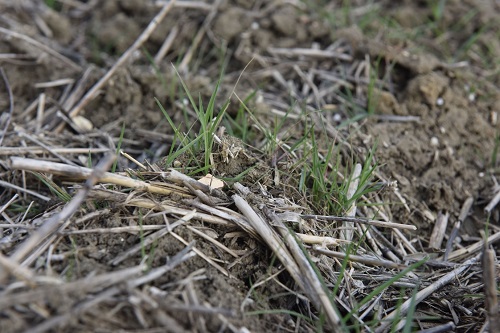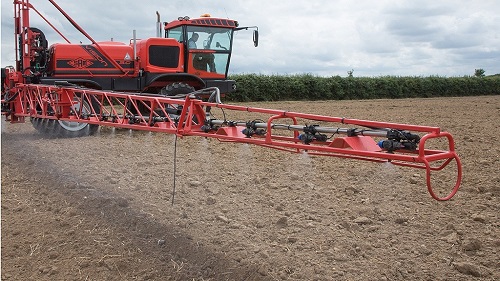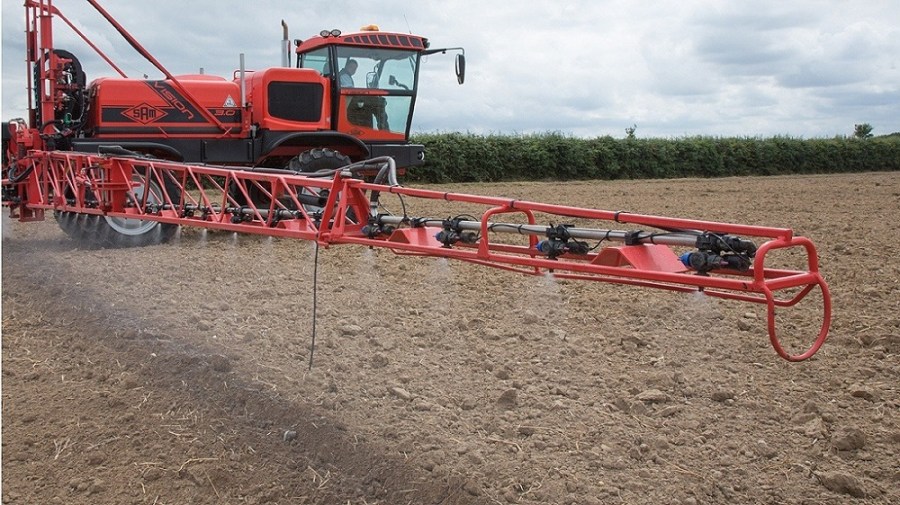High levels of initial dormancy in this season’s black-grass seed has posed another difficult challenge for growers’ control strategies this autumn, and potential consequences for establishment systems for years to come.
CPM takes a look at some of the recent findings from Syngenta’s blackgrass focus site at Barton, Cambs.
By Charlotte Cunningham.
Seed gathered from the Syngenta blackgrass focus site, at Barton in Cambs, has shown germination levels of just 8% — according to tests carried out by ADAS — indicating very high levels of dormancy on the site this season.

Independent AHDB research has reported cool and wet weather from mid-June to mid-July is typically a precursor for high dormancy.
The implication was that low initial germination would limit the potential for stubble cleaning, and that seeds germinating later, over a prolonged late-autumn and early-winter period, would severely test the efficacy of pre and post-emergence herbicide sequences, warned Syngenta technical manager, Georgina Wood.
“In previous seasons with high seed dormancy, trials have shown a plough-based establishment system has been beneficial in burying seed below its viable germination level.
“However, that has to be balanced against the risk of bringing older seed back to the surface germination zone,” she adds.
According to Georgina, herbicide strategies will need to be even more robust to effectively counter prolonged blackgrass seed germination and later weed emergence.
“Trials have repeatedly shown that higher rates of Defy do give increased activity and prolonged control of grass weed emergence, which could be especially useful in high dormancy situations.
“Furthermore, the role of sequential treatments could be particularly effective to target later germinating seeds, whilst they are still small and more effectively controlled. Including residual activity in any pre or post-emergence treatment will be valuable.”
Emergence trials
ADAS studies have shown that in low dormancy years 90% of blackgrass seed will typically emerge within 30 days, but in a high dormancy season will take 60 days for the same level of emergence.
As well as this, the data also highlighted that spring emergence was greater in high dormancy seed.
With this in mind, individual farm’s testing of blackgrass seed populations could be a useful tool to adapt control strategies, adds Georgina.
“New trials and research, to better understand the patterns of grass weed emergence, along with the effects of different establishment techniques on weed seed distribution in the soil profile, could significantly improve future decision making.”
Water rates
As well as this, results of new grass weed herbicide application trials have confirmed more consistent results with application at a water volume of 200 litres/ha.
New 2018/19 application research at the Syngenta grass weed focus sites — at Barton in Cambridgeshire for black-grass and Doncaster in Yorkshire on ryegrass — has shown that increasing water volume, to 200 litres/ha, can deliver consistently better grass weed control from pre-em applications, compared to treatment at 50 or 100 litres/ha.

When it comes to spray applications, Syngenta application specialist James Thomas, says that the trials have shown that while lower water volumes can perform well in ideal conditions and with a perfect seedbed, wherever situations are evenly marginally compromised by weather or seedbed quality, application at 200 litres/ha will achieve more consistent results.
“In a difficult season, or where grass weeds are proving more problematic, there is a positive action to enhance control rates with application at 200 litre/ha,” he advised.
“Overall, the trials have shown an average 10% enhancement in grass weed control at 200 litre/ha, compared to 100 litre/ha.”
Find out more at the Syngenta Barton blackgrass focus site results meeting, Tuesday 3rd December, Cambridge, Click here to register for your place




